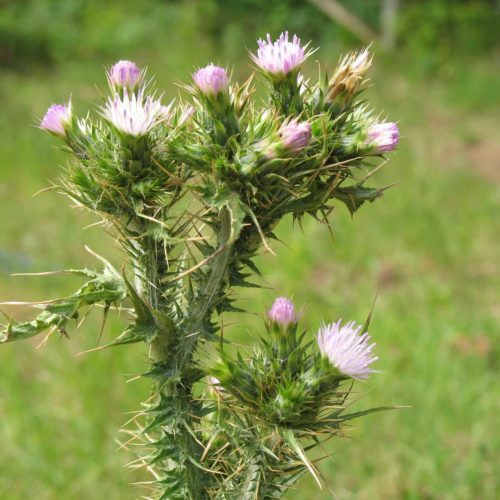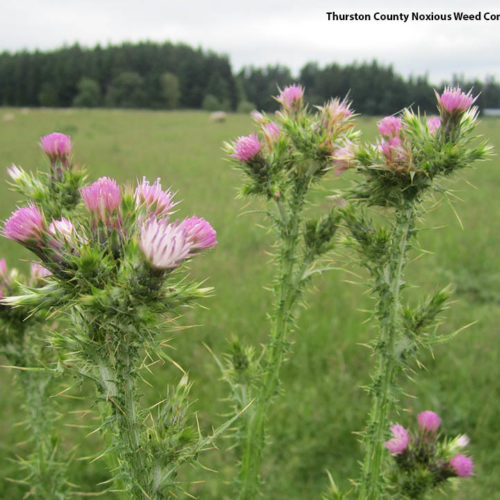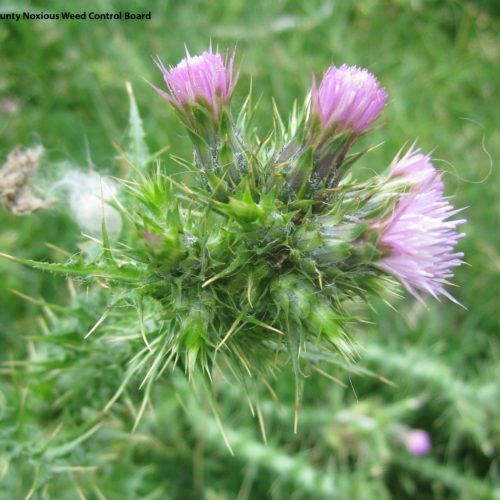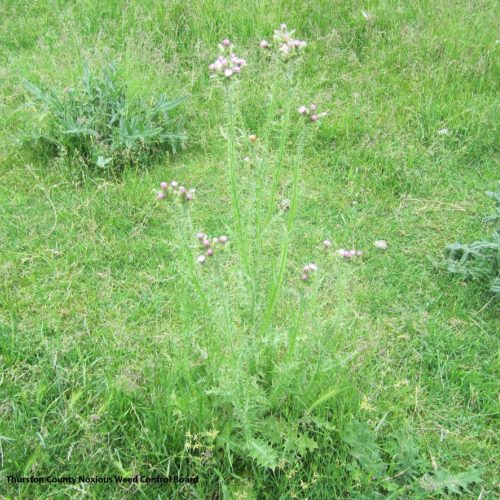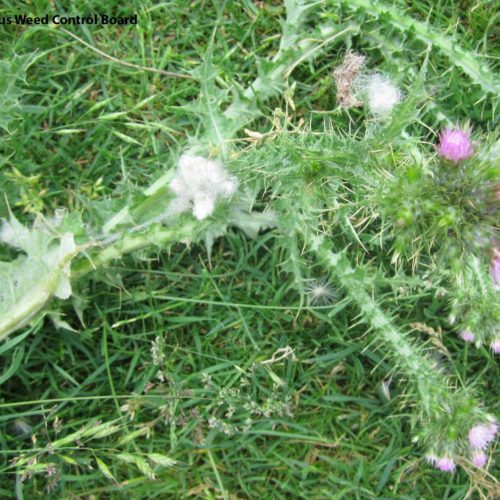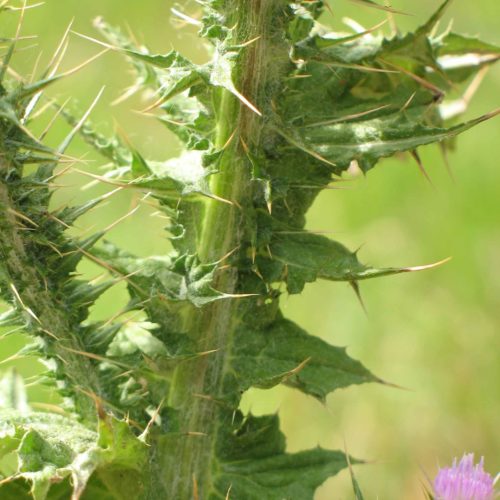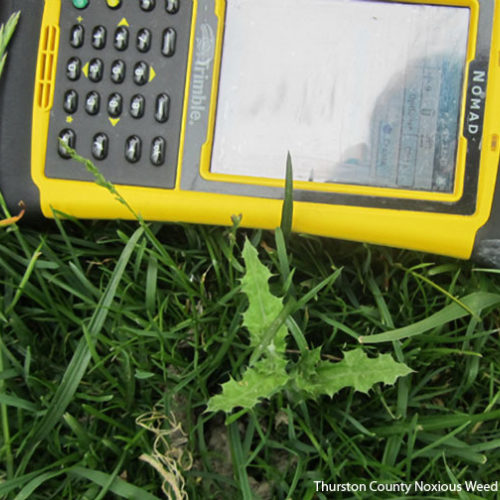Slenderflower Thistle
Carduus tenuiflorus
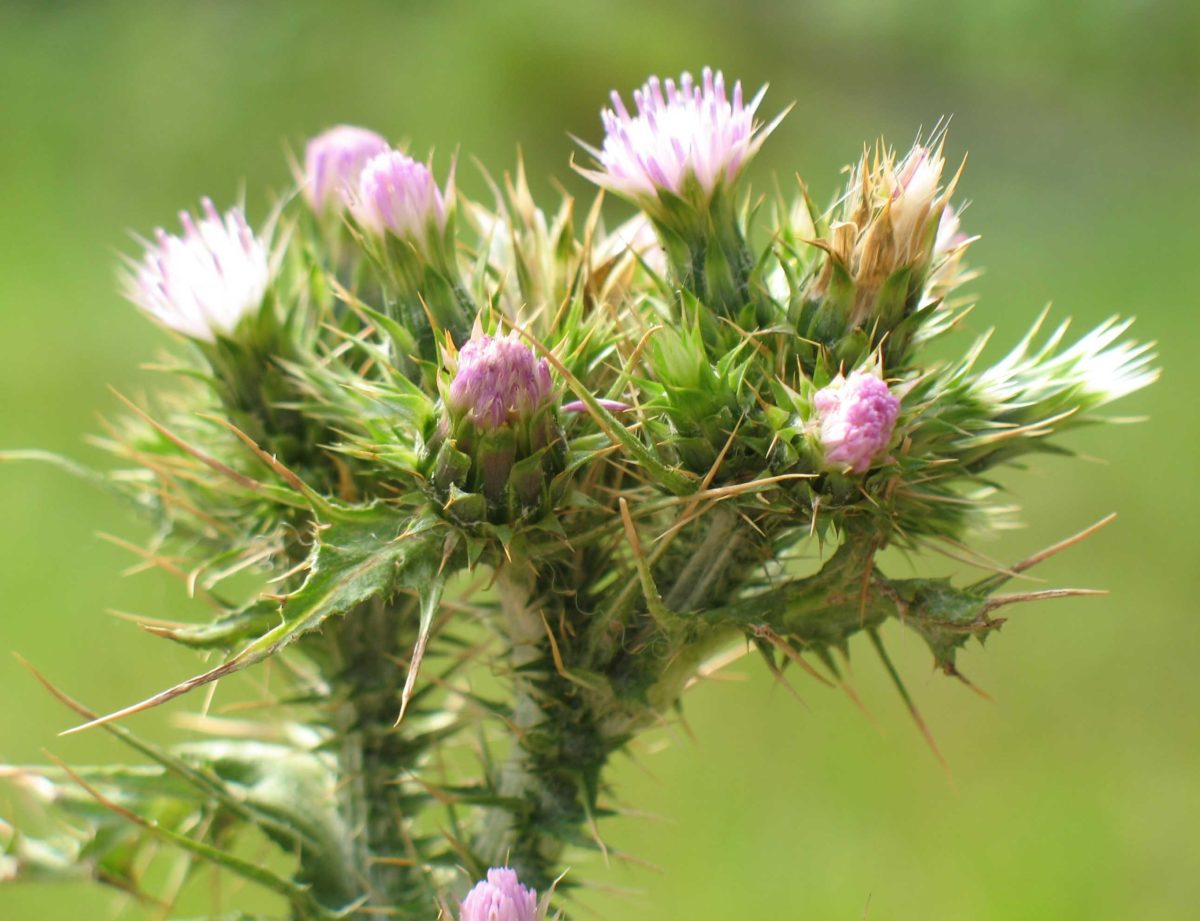
Family: Asteraceae
Other Common Names: Winged Plumeless Thistle
Weed class: A
Year Listed: 1991
Native to: Northern Africa and Western and Southern Europe
Is this Weed Toxic?:
not known to be
Legal listings:
This plant is also on the Washington State quarantine list. It is prohibited to transport, buy, sell, offer for sale, or distribute plants or plant parts of quarantined species into or within the state of Washington or to sell, offer for sale, or distribute seed packets of seed, flower seed blends, or wildflower mixes of quarantined species into or within the state of Washington. Please see WAC 16-752 for more information on the quarantine list. For questions about the quarantine list, contact the Washington State Department of Agriculture's Plant Services Program at (360) 902-1874 or email PlantServices@agr.wa.gov.
Why Is It a Noxious Weed?
Slenderflower thistle invades range lands and pastures, outcompeting desirable forage plants and native plant species by forming dense stands.
How would I identify it?
General Description
Stems grow up to around 6.5 feet and are unbranched to branched and plants are covered in loose, woolly hairs. It germinates in the fall, then overwinters as a rosette (a radiating cluster of leaves) and produces flowering stalks in late spring.
Flower Description
Flowerheads are clustered in groups of 5 to 20+ at branch tips. Flowers pinkish, 0.4 to 0.6 inches long. Outer bracts at the base of flower head with 1 to 2 mm long spine tips and inner bracts without spines. Bract margins slightly membranous.
Leaf description
Leaves at stem base are generally 3.9 to 9.8 inches long. They have 6 to 10 spine-tipped lobes and tapered leaf bases forming winged leaf stalks. Leaves are often covered with loose woolly hairs. Stem leaves are shorter, less lobed and stalkless.
Stem description
Stems have large spiny wings that form from leaf bases that run down stems.
Fruit Seed Description
Slenderflower thistle has a seed (achene) within a dry covering, with bristles on the top end. It is 0.16 to 0.20 inches (4 to 5 mm.) long.
May Be Confused With
Italian thistle, Carduus pycnocephalus, is similar but it generally has fewer flowerheads (1-5), than slenderflower thistle, Carduus tenuiflorus (5-20 flowerheads).
Where does it grow?
Slenderflower thistle grows in dry open areas such as pastures, ranges, right-of-ways and areas of disturbance. Please click here to see a county level distribution map of slenderflower thistle in Washington.
How Does it Reproduce?
Slenderflower thistle reproduces by seed.
How Do I Control It?
Mechanical Control
Tilling or digging out slenderflower thistle are effective methods of mechanical control.
Cultural Control
Deferring sheep grazing until autumn has been effective in reducing stand density. When competing with the dense growth of other ungrazed pasture plants, slenderflower thistle may grow soft and etiolated (white from a lack of chlorophyll). Sheep will then graze the thistle along with other pasture plants.
Herbicide Control
Please refer to the PNW Weed Management Handbook, or contact your county noxious weed coordinator.
For More Information
See our postcard for early detection information about Italian and slenderflower thistle.
See our Written Findings for more information about Slenderflower thistle (Carduus tenuiflorus).
Thurston County NWCB Fact Sheet on slenderflower thistle
Pierce County NWCB Fact Sheet on slenderflower thistle
Clark County NWCB Fact Sheet on slenderflower thistle



